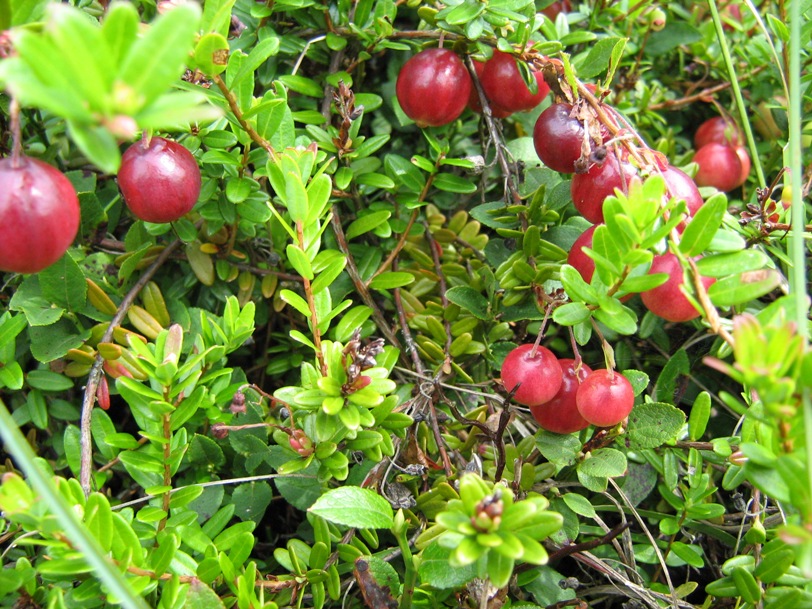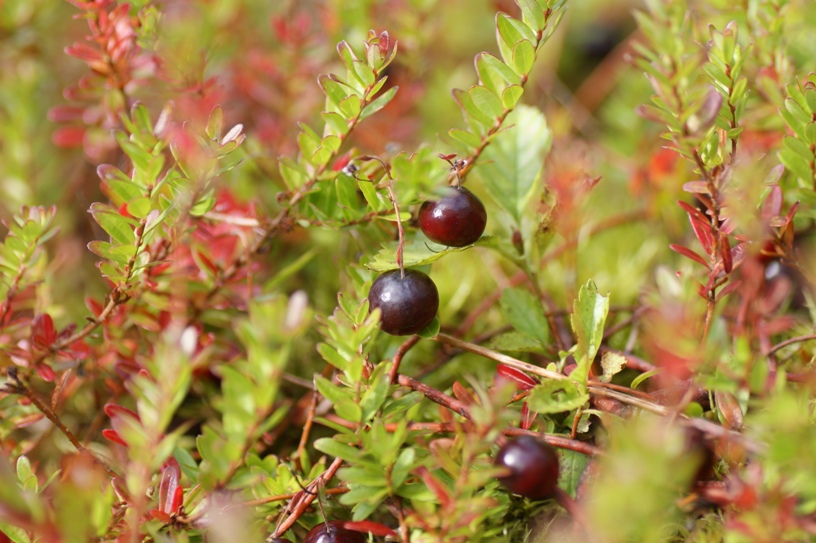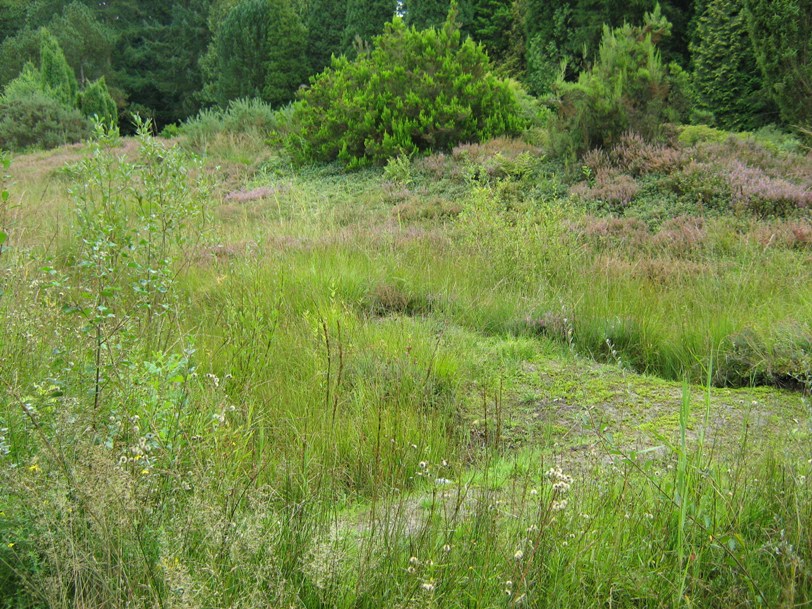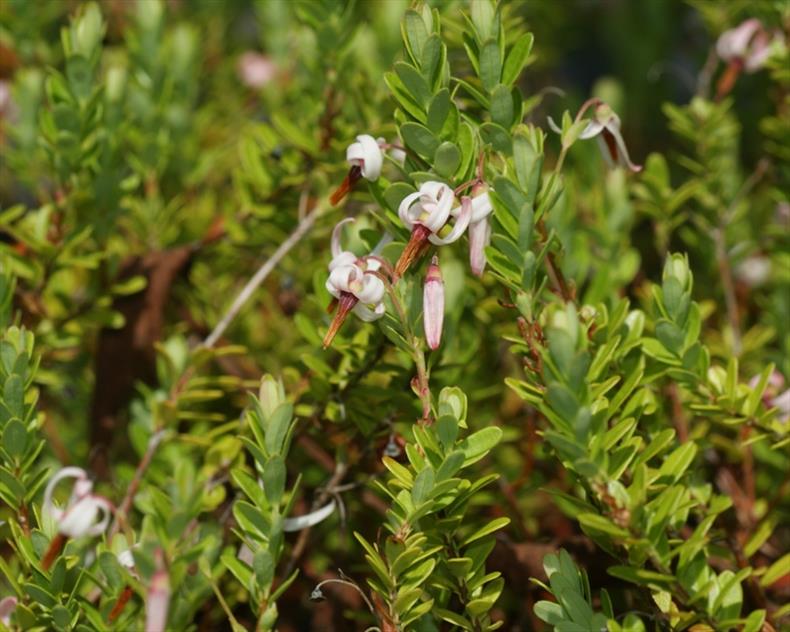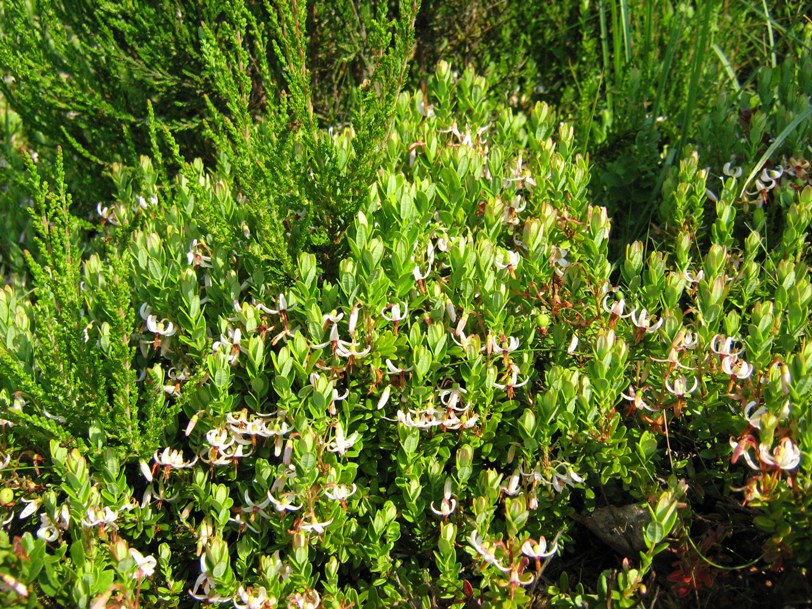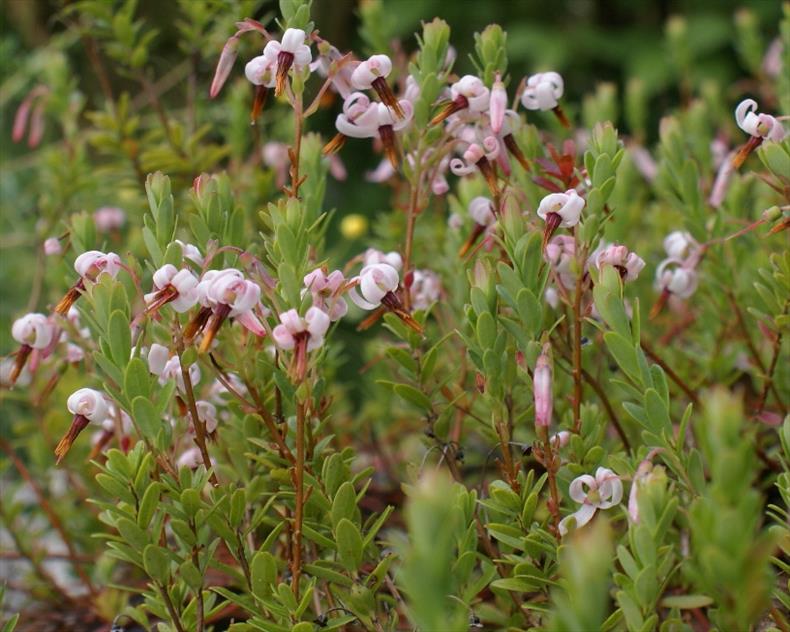American Cranberry
Vaccinium macrocarpon
Heath family (Ericaceae)
Winter compote
Cranberry is known for its long-lived, slightly bitter, slightly acidic, large sized berries (hence its species name macrocarpon or ‘large berry’). It is served as an accompaniment to meat dishes in winter.
Cranberry usually grows in acidic bogs and dune valleys.
Vaccinium is Latin and derived from vacca (cow) and baccinium (berries): a berry loved by cows.
The American cranberry belongs to the same genus as the bilberry (V. myrtillus) and comes from North America. It is also widely planted in the Netherlands (e.g. on Terschelling) and regularly escapes into the wild. Cultivating it is a profitable business.
Its small leaves are narrow and blunt and distinguish this species from the native bog cranberry, which has pointed leaves. Both types of cranberry have a finely shaped flower with pink, somewhat reflexed petals.
Themes
Crown jewel in the Haren Botanic Garden and of Domies Toen.
The berries are rich in vitamin C and citric acid, and are used in compotes and drinks.
Details
| Description: | Shrub, 50-100 cm. |
|---|---|
| Distributions: | Originates from eastern north america. introduced to britain, the netherlands and germany. |
| Habitat: | Coastal dunes, heathland and marshes |
| Year cycle: | Perennial (polycarpic evergreen) |
| Hardiness: | Colder than -4 f (very hardy) |
| Flowering period: | Juni - augustus |
| Flower color: | Pink, red |
| Fruiting period: | Augustus - oktober |
| At its best: | Juni - oktober |
